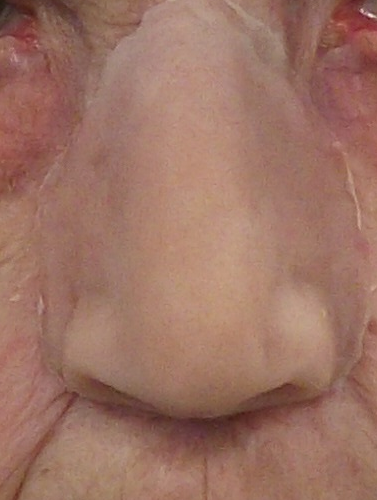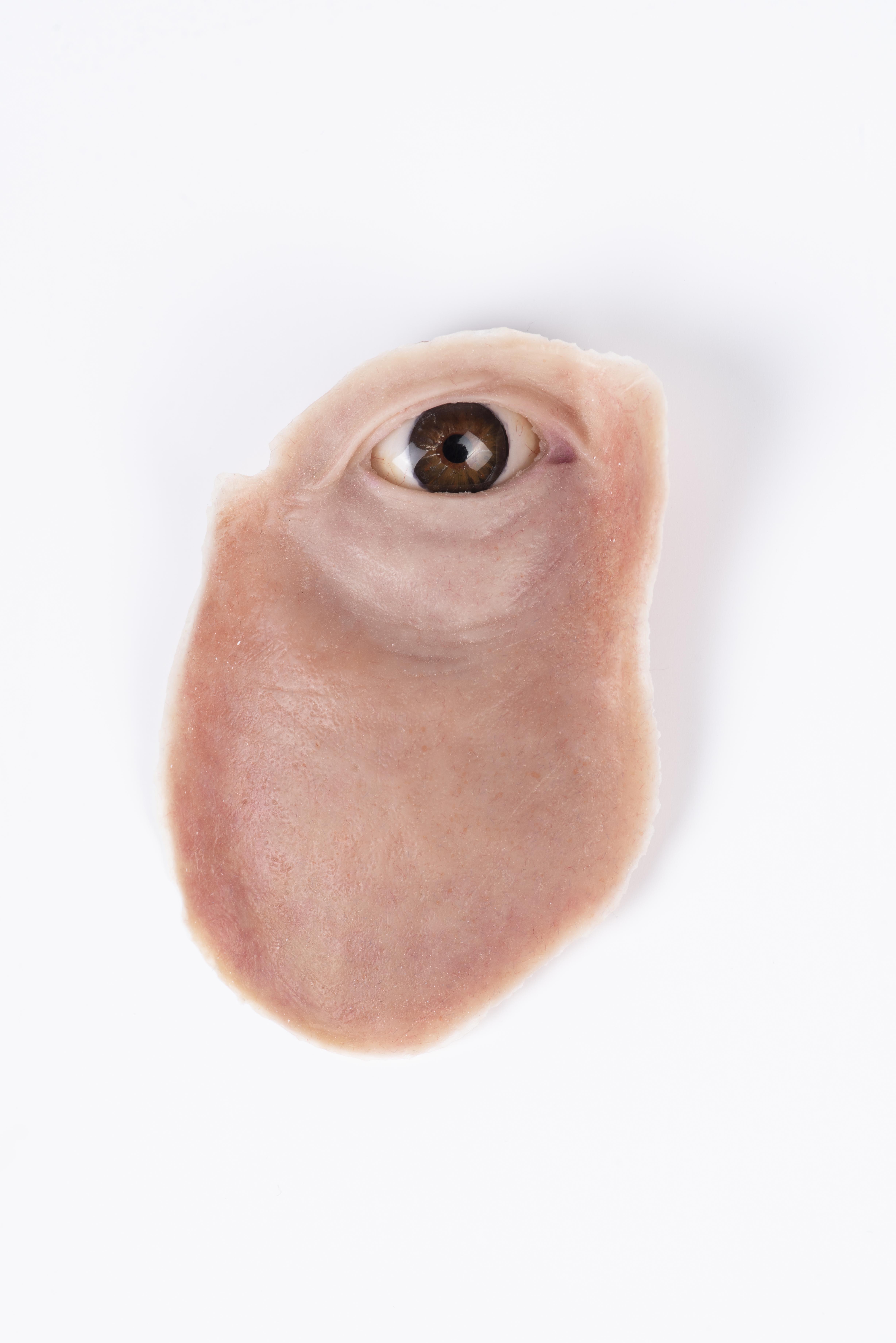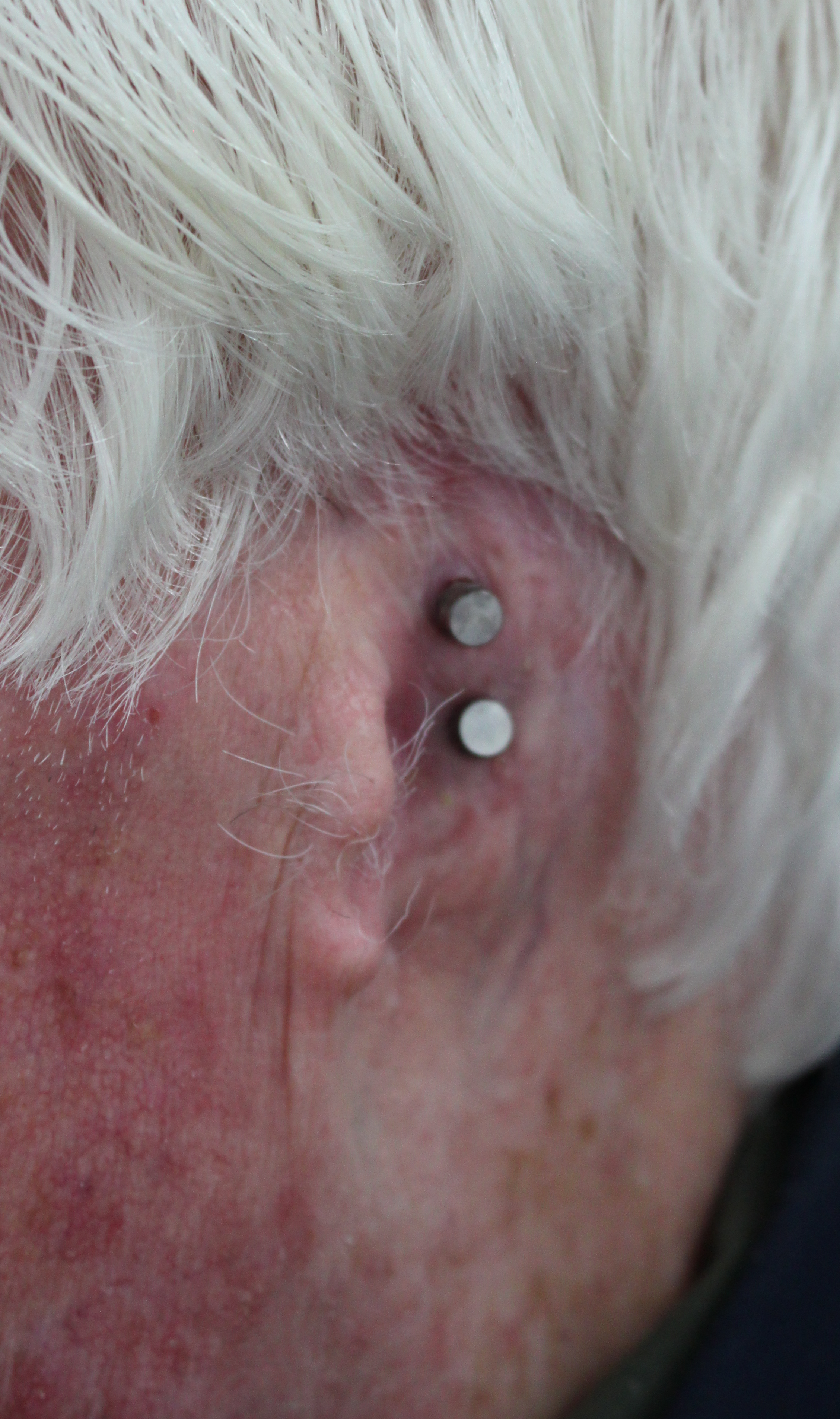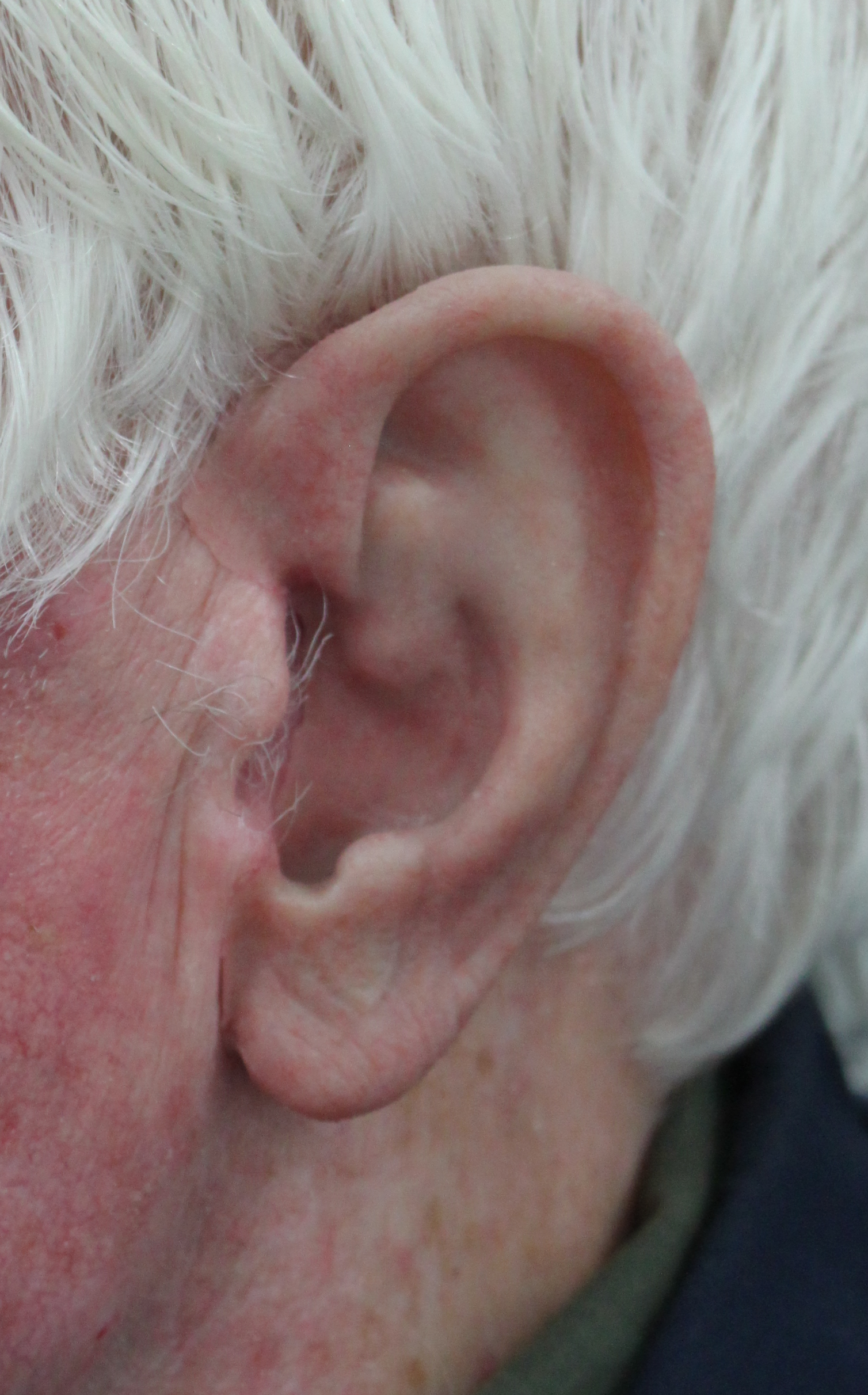Maxillofacial Prosthetics
Information for patients from Maxillofacial Prosthetics
You are having a facial prosthesis made for you after your surgery. The following information will help you understand the types of prostheses available.
If you have any further questions, please speak to one of the maxillofacial prosthetists. Their contact details are at the end of this leaflet.
What is a prosthesis?
Prostheses are artificial appliances. They are designed to restore a missing part of your body, that cannot be reconstructed or repaired surgically.
Maxillofacial prostheses replace:
anatomy inside your mouth (intra-oral prostheses), or
a part of your face (extra-oral prostheses), such as the eye, ear, nose, or cheek.
These removable prostheses are usually put on and taken off each day, much like a pair of dentures.
What can a prosthesis replace?
There are many types of prosthesis available, depending on which surgery you have had.
Intra-oral prostheses include replacing teeth and the palate (roof of your mouth). You use these to help with eating, swallowing, and speech.
External facial prostheses replace missing facial features, such as your nose, ear, or eye and lids. These can be helpful in restoring your confidence after treatment for an illness that results in a major facial difference.
Nose
Some surgery involves the removal of all or part of your nose. A nasal prosthesis provides a replacement for the structure of your nose, and aesthetics to your face (how your face will look).
We use this type of prostheses when surgical reconstruction is not possible. A very realistic looking prosthetic nose can be made out of silicone. It is sculpted and colour matched to your surrounding skin. Photographs taken before your surgery can help with this.
Nasal prostheses help:
humidify (balance the change of temperatures) of your nasal cavity when you breath, and
like a real nose, protect the delicate sensitive mucosal tissue that lies below.
A nasal prosthesis is removable. It can be attached using an adhesive, bone anchored implants, or spectacles. For more information, see How are prostheses made and fitted? below.
Eye
A prosthetic eye, is also known as an ‘ocular prosthesis' or ‘indwelling eye’. It is used following the loss of an eyeball. These prostheses are made of a hard material called acrylic. They are custom made to fit into an individual’s eye socket or as a thin shell over an unseeing cloudy eye. The prosthetic eye is coloured to match your other eye.
If your eye and the surrounding eyelids and skin are missing, we can make you a larger prosthesis called an orbital prosthesis. This type of prosthesis includes a prosthetic eye, and the eyelids and surrounding anatomy. These prostheses do not move or blink. However, they are realistic and can include eyelashes and eyebrows.
This type of prosthesis can be attached using a variety of methods. Your maxillofacial prosthetist will discuss these with you before treatment begins.
Ear
Removal of cancer can lead to the loss of part or all of your ear. Ear prostheses made from silicone are secure and can look very realistic. They help to keep glasses on and help your hearing by duplicating the lost anatomy of your external ear.
This type of prosthesis can be attached using adhesive or bone anchored implants.
-
 A prosthetic nose
A prosthetic nose -
 A prosthetic eye
A prosthetic eye -
 Bone anchored implants
Bone anchored implants -
 Ear prosthesis attached to bone anchored implants
Ear prosthesis attached to bone anchored implants
How are prostheses made and fitted?
Prostheses are custom made for each person. Making a prosthesis needs the specialist skills of a maxillofacial prosthetist.
For most facial prostheses your prosthetist will first see you for a consultation assessment. This is when they will discuss and produce your prosthetic treatment plan. The plan takes into account:
your individual needs, goals, and circumstances, and
considers all the discussions between you and your surgeon.
At this appointment your prosthetist will tell you about the prosthetic treatment pathway. They will also answer any questions that you or your family may have.
It is important that we make your prosthesis at the right time, so that it fits comfortably. The area must have healed well and all soft tissue swelling must have gone down.
We will make your prosthesis over a series of appointments. We may take impressions of the area, sculpting, fitting, and colour matching. The number of appointments you have, and how long it takes to make your prosthesis will depend on the area we are replacing. If there are areas of high detail and other complicating factors, it may take longer.
What are prostheses made of?
Prostheses are made from biocompatible materials that mimic the lost tissue. These materials are not harmful or toxic to living tissue.
Extra-oral facial prostheses are often made from medical grade silicone. This material is durable (long-lasting), has a life-like feel, and is coloured to look realistic.
Prosthetic eyes and teeth are often made with acrylic. Acrylic is a type of plastic that can be coloured and polished.
Other intra-oral and cranial prostheses need the use of strong materials, so they are strong and durable. These include titanium or PEEK (a semi-crystalline thermo plastic).
What are the advantages and disadvantages of a facial prosthesis?
There are advantages and disadvantages to consider when deciding if a prosthesis is right for you.
Advantages
After major head and neck surgery, a prosthesis can help your rehabilitation. It can also improve your quality of life.
They offer protection and support to affected areas.
Following cancer surgery, prostheses are important tools for your social and physical rehabilitation.
They can be very subtle. In certain facial functional situations, they can look better than your surgical reconstructive options.
Prostheses do not need more surgery, unless it is implanted or attached via bone anchored implants.
They offer protection for delicate tissues.
Disadvantages
A prosthesis is not living tissue. It does not blink or move, or have feeling like a real body part.
A prosthesis may not be a permanent attachment. Usually you will remove it each day for cleaning.
The details and colour on a prostheses will wear out over time. These will need maintenance and replacing from time to time. We arrange a review each year, so that this work can be undertaken. For more information please read How long will my prosthesis last? below.
How is my prosthesis attached?
You can remove most facial prostheses. They are attached to the body using a variety of different methods. Your surgeon and maxillofacial prosthetist will decide the most suitable attachment type for you, based on:
your medical history
your skin and bone characteristics
your dexterity (ability to hold and position the prosthesis), and / or
the support you have at home.
Facial prostheses may be attached using medical adhesive or via bone anchored implants. They can also be attached to your glasses.
What are bone anchored implants?
We can use bone anchored implants to attach both intra and extra-oral prostheses. This involves surgically placing titanium implants into your bone. You will have a general anaesthetic for this procedure (you are asleep). This may be during your first surgery or at a later date.
Before surgery
A multidisciplinary team will discuss the planning, positioning, and attaching of your bone anchored implants. This team includes surgeons, prosthetists, and supporting healthcare staff. Your surgeon will arrange for you to come to hospital for a series of scans, to help the team's planning.
After surgery
When your implants are in place, your bone and facial tissue need to recover. This needs to happen before your prosthetist continues with any treatment.
We will cover your implant with a dressing. This keeps the area clean, so your wound can heal.
After you have had time to heal, your prosthesis manufacture process begins. This starts with a series of appointments with your maxillofacial prosthetists.
Your prosthesis will include magnets or clips, resulting in a snap-on / snap-off type of prosthesis.
How long will my prosthesis last?
How long a prosthesis lasts will depend on:
the type of prosthesis used
the material it is made from
how it is attached
how it is cared for, and
how often the prosthesis is worn.
A general time frame is one to three years, with many lasting much longer.
The prosthesis you are given soon after surgery may have a shorter lifespan. Tissues continue to settle and change up to a year after your surgery, and this will affect the fit. A well cared for later prosthesis will fit well and last for much longer.
Daylight will affect the silicone and your own skin pigmentation. Your prosthesis will need regular reviews to check for colour loss or tone change. This is so we can make sure that your prosthesis continues to look realistic / natural.
How long will I wait after surgery for my prosthesis?
We want to make sure that your prosthesis fits well. It is important that all areas have had time to heal from the surgical or radiation treatment you have had. Your surgical care team will tell you when the time is right for them to fit your prosthesis.
What if I have any questions or concerns about prosthetics?
If you have any questions or concerns, please contact the Head Maxillofacial Prosthetist or Head of the Maxillofacial Laboratory.
Head Maxillofacial Prosthetist or Head of the Maxillofacial Laboratory
Maxillofacial Laboratory
William Harvey Hospital, Ashford
Telephone: 01233 651859